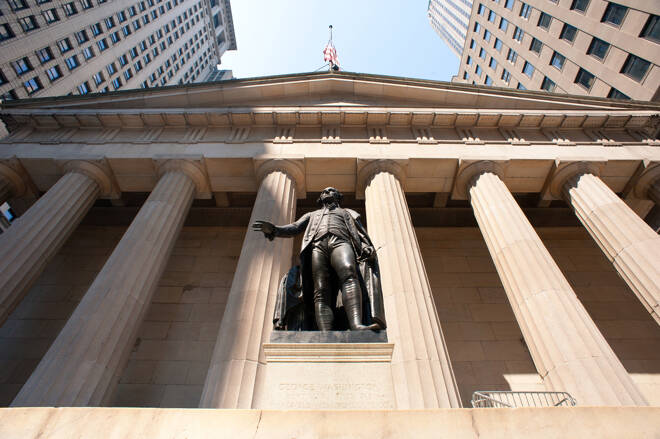Advertisement
Advertisement
Investing In Foreign Markets Sounds Exciting – But Isn’t Always – Part 2
Published: May 23, 2021, 06:46 GMT+00:00
My article published on November 20, 2020 Investing In Foreign Markets Sounds Exciting - But Isn't Always reviewed the performance of the main global economic areas and the performance of their equity markets.
Summary
- Global business cycles are closely interconnected and synchronized.
- Global equity markets reflect the policies of their leaders.
- Global equity markets respond accordingly.
The conclusion was the global business cycles are perfectly synchronized and so are their major tops and bottoms of their equity markets. This article is updating the above article and looks at the most recent relative economic performance of their business cycles and markets.
The main force driving the US business cycle is the need to keep inventories growing at the same pace as sales as discussed in detail here.
During Phase 1 & 2 of the business cycle (see above graph), business increases production, hires more workers, buys more raw materials, and increases borrowing to meet its operational needs. The virtuous cycle (positive feedback) lasts until the end of Phase 2.
At the end of Phase 2, soaring commodity prices such as crude oil, lumber, copper, and rising wages, and interest rates create an inflationary environment causing consumers to become more cautious about their spending.
The slowdown of demand causes a negative cycle (negative feedback). Business is forced to reduce the growth of inventories by cutting raw material purchases, laying off workers, and reducing borrowing. The business cycle is now in Phase 3.
The business cycle goes through Phases 3 & 4 until the causes that induced the slowdown are brought under control. At that time consumers will recognize their purchasing power has increased again due to the decline in commodities, inflation, interest rates, and inflation. Demand increases and the virtuous cycle starts all over again with Phase 1.
The above chart shows the global business cycle as published by the OECD.
The OECD defines the graph as a leading indicator of the economy. A practical way to look at the graph is as standing for the fluctuations of the economy around an average growth rate (the horizontal line going through 100.)
Since 2009 the global economy has experienced three business cycles: 2009-2013, 2013-2016, and 2016-2020. Since March 2020, the global business activity has begun a new business cycle.
The current position of the indicator is slightly above 100, suggesting the global economy is growing slightly above its long-term average pace.
The EU area indicator has the same cycles of the global economy. Growth, however, is more muted and still below its historical average. It reflects the economic and political idiosyncrasies affecting the continent.
The Chinese business cycle has the same turning points as the global cycle. Growth is estimated to be strong for China, according to the OECD data. This conclusion is not confirmed by the latest Markit purchasing managers index for China and by the muted action of the Shanghai index.
The above chart shows the US business cycle indicator as updated in each issue of The Peter Dag Portfolio Strategy and Management. The US business cycle, as computed from market data in real time, shows the same turning points of the above business cycles released by the OECD. An exclusive complimentary subscription is available to the readers of this article on https://www.peterdag.com/.
The above chart shows the performance of the global stocks market ex-US (VEU). The lower panel shows the relative performance of VEU compared to the S&P 500 (SPY). The downtrend of the line shows the persistent underperformance of the global market compared to the US market since 2007.
The chart also shows the cyclical nature of the global equity market with the major bottoms taking place at the bottom of the business cycles (2009, 2012, 2016, and 2020).
The above chart shows the performance of the European stock market (IEV). The lower panel shows the performance of IEV compared to the US market. The European market has the major bottoms coinciding with the bottoms of the global business cycle. The European market has persistently underperformed the US market since 2007, as reflected by the declining line in the lower panel.
The above chart shows the performance of the Shanghai index. As in the earlier graphs, the Chinese market has the same cyclical bottoms as those of the other global economic areas. The equity market has underperformed the US market since 2007 as shown by the declining line in the lower panel of the chart.
Key takeaways
Since last November, trends are still unchanged with global business cycles still trending up.
Global business cycles are perfectly synchronized and have the same turning points despite differences in language, social habits, business cultures, and political systems.
Global equity markets have the same turning points at major tops and bottoms. The investment decision is therefore about which market will display more volatility. The risk-adjusted return of the portfolio may be affected by this decision.
Major foreign equity markets continue to underperform the US market.
Relative performance among equity market reflects relative economic performance based on which country has the soundest and more growth oriented economic policies.
Investing in a foreign market is not necessarily a hedge to a portfolio performance because foreign equity markets tend to move in the same direction as the US market.
For a look at all of today’s economic events, check out our economic calendar.
About the Author
George Dagnino, PHDcontributor
George Dagnino, PhD, is chairman of Peter Dag Strategic Money Management. As the former chief economist and risk manager for Goodyear, he managed $4 billion of interest rates and currency hedge portfolios.
Advertisement
